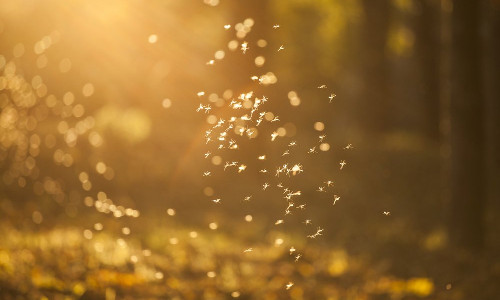If you spend any time outdoors, especially near water, chances are high that you’ve experienced the annoyance of bites from the no-see-um. Also known as biting midges, these pesky little pests seem to come out of nowhere, biting you and leaving behind painful, itchy welts. One way to avoid getting bit is to avoid places where no-see-ums thrive, but this is easier said than done. Here’s a closer look at where no-see-ums live, so you can be informed about the best way to care for them.
No-See-Ums – A Nation-Wide Pest
The habitat of the biting midge is really all across the nation, and even in many other parts of the world. The no-see-um is actually a common name for a family of biting midges. There are between 4,000 and 5,000 of these critters, and they can live in most types of climates depending on the species.
These flies require moist soil to reproduce, so they’re commonly found in habitats that have water nearby. They also require plants to feed off of, so they typically live in areas that have both vegetation and water. Because of the many different species, they are found in both fresh and salt water habitats. Whether you live near the ocean or near a freshwater lake, you can find these tiny biting midges nearby.
That said, there are certain areas that are more prone to problems with these midges than others. Coastal areas, tropical areas, and areas near freshwater bodies of water are common. Salt marshes, swamps, and bogs also common have these pests.
Some species of no-see-ums can thrive in areas with animal manure, such as farms and ranches, according to the University of Florida. They reproduce near the manure, rather than near a body of water. Animal farming operations are often overrun with no-see-ums as a result.
Where No-See-Ums Don’t Live
No-see-ums are found in most states throughout the United States, but some climates are less conducive to their reproductive needs. Desert areas or high mountain elevations, for example, rarely have large populations of no-see-ums. They also do not live inside buildings, though they can sometimes enter buildings through screens. Indoor environments do not provide many options for breeding, so the critters that do come inside in search of a blood meal will not reproduce.
If you are heading into an area where no-see-ums are likely, consider taking proactive measures to keep them away from your skin. You can enjoy the outdoors, even in moist environments where these critters reproduce readily, with the right precautions.

